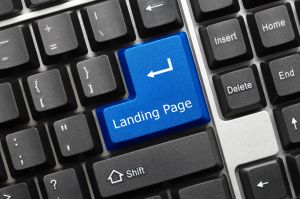Landing Page Design Guide
Website Information Request Form Design Tips
Social Listening - Why
Social Media Listening Tools
Social Media Networks Database
Direct Response Banner Ads Guide
Direct Response Email Guide
Email Copy Guide & Tips
Email Design Guide & Tips
PPC Ads - Tips For More Effective Writing
Guide to Creating Profitable Personas
How to Start a Successful Blog
Successful Blog Post Checklist
To find out more about our marketing applications, products and services, click here or call us today at (651) 666-0934.
 Landing Page Design & Tips
Landing Page Design & Tips
A “landing page” is a specialized page that visitors are directed to once they've clicked on a link, usually from an outside source such as an email, a Pay Per Click banner ad, a blog post, a URL for responding to a print, direct mail, or broadcast direct response advertisement. The page is usually tightly focused on a particular product or service with the aim of getting the visitor to buy or take some form of action rapidly that will ultimately result in a sale.
There a few questions that you need to ask yourself when creating a landing page:
- What are you offering?
- Whom do you wish to appeal to?
- Why would they be interested in your offer?
- What do they need to do to participate/purchase?
When writing copy for landing pages, use short statements. Your sentences should be brief or bullet-points that provide bite-sized chunks of valuable information. You should always give the reader an avenue of communications so that they can request additional information if they want it.
There is no ideal length of page. The length of the page should be determined by the copy and supporting graphics that are required for the visitor to make a decision and take action and tell them how to take action. Products/services with more features and benefits will require more space, a longer page to communicate these features and thoroughly explain the offer so readers’ questions and concerns are addressed so they can act more confidently. The more unique, complicated and/or expensive a product is, the more content it will usually take to convince the buyer to make the purchase or further explore the possibility of making the purchase.
Make sure that the major questions someone may have are addressed in your copy. Ask the questions of yourself and provide the answers. Your copy needs to follows a logical sequence and you shouldn’t bounce around from point to point to avoid reader confusion.
Where appropriate, use headings and blank lines to organize your content so it is neat instead of a textual barrage. Separate some elements with different, but complementing colors.
People read from left to right. Put your promotional images on the left side of the page so the reader is not forced into uncomfortable eye movement requiring more time and effort to read your page. You want them to get the information they need to make a decision quickly. If the flow is uncomfortable, you may even lose the reader, because they just don’t want to bother. Also just have enough, relevant images to convince the reader that you have what they want. Bad graphic design can kill your page.
A landing page is like a catalog page, they both have hot spots. These are places or positions where the eye is naturally attracted. You can use these hot spots to place important offer and product information that will increase your response rate.
Your page needs to load quickly in the browser, so it needs to be lean. Page abandonment is a problem and usually caused by slow loading pages. People are in a hurry and they don’t want to sit around twiddling their thumbs while your page loads. Make sure you test your page in all browsers that your target audiences are likely to use. And, keep in mind that not all business users have T1 lines or broadband.
Landing Page Design Tips
- Strong headlines are important.
- Use benefit driven copy.
- Be succinct.
- Use value-focused button labels vs. effort-focused button text.
- Place the most important information and call-to-action above the fold.
- Optimize the page for mobile devices.
- Add social proof to build trust (reviews, testimonials, case studies, press logos, etc.).
- Avoid information overload.
- Incorporate keywords on PPC landing pages.
- Keep the landing page to a single purpose and single focused message.
- If possible show your product/service being used in context.
- Use videos if possible, depending on product service offer. Videos can improve conversion up to 80%.
- Provide a guarantee to reduce/remove risks.
- Provide a free trial if appropriate. Try-before-you-buy is a standard and expected feature.
- Test new ideas using A/B testing.

